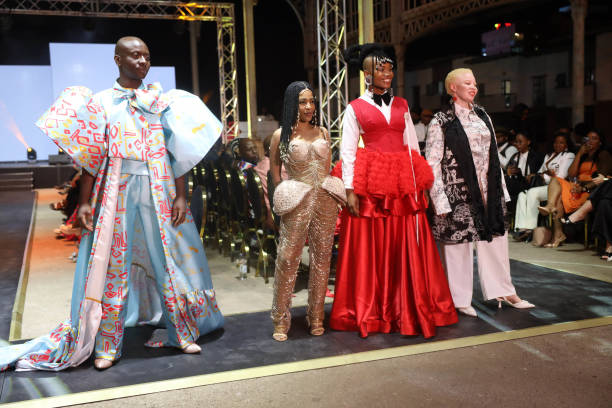In recent years, African fashion has evolved into a global phenomenon, celebrated for its vibrant patterns, rich cultural significance, and innovative designs. However, an exciting new fusion is emerging within this creative landscape—one that blends traditional African aesthetics with the influences of Chinese culture. From contemporary designs to subtle incorporations of Chinese motifs, local African designers are increasingly embracing Chinese-inspired elements, marking a growing trend that celebrates cross-cultural fashion fusion.
At the heart of this evolution are designers like Nigerian Ladunni Lambo, whose collections artfully blend African and Chinese inspirations. Lambo’s designs feature traditional Chinese aesthetics, such as floral motifs and structured silhouettes akin to the qipao (the classic Chinese dress), while staying true to her West African roots through the use of bold colors and African prints
. Similarly, South African designer Marianne Fassler has incorporated Chinese elements into her collections, notably through graphic representations of Chinese dragons and fortune cat motifs, fused with the distinct vibrancy of African textile patterns
.
The influence of Chinese culture on African fashion is not just a one-way street; it’s a dynamic exchange. As Chinese designers and brands like Li Ning gain international attention, their global influence is increasingly felt in Africa, where streetwear and athleisure have found enthusiastic audiences. This cross-pollination between African and Chinese fashion signals more than just an aesthetic shift; it reflects a broader trend where cultural boundaries are becoming increasingly fluid, and fashion is serving as a vehicle for new cultural conversations
.
One of the fascinating aspects of this fusion is how it mirrors the larger global trend of “guochao” (Chinese fashion), where Chinese heritage and modern trends are seamlessly integrated into contemporary apparel
. Just as Chinese fashion has seen a surge in the use of traditional elements—whether through embroidery or symbolic motifs—African designers are doing the same, reinterpreting these elements in ways that are uniquely African. This trend is also bolstered by the growing trade and cultural ties between China and African nations, which have led to more open collaborations between Chinese and African creatives
.
In Africa, where fashion is not just about style but also a powerful statement of identity, this blending of influences has sparked an exciting conversation about the future of global fashion. Designers are discovering that combining the rich textile traditions of both China and Africa can result in strikingly fresh, innovative designs that appeal to a diverse, international audience. Whether through the elegant flow of silk Chinese-inspired garments or the boldness of African prints, the collaborations we see today offer a glimpse into a future where fashion is defined by cross-cultural dialogue rather than boundaries.
This cross-cultural blending does more than just capture the attention of fashion-forward individuals; it showcases how fashion can bridge cultures, create new possibilities, and reflect the changing dynamics of a more interconnected world
.
As this exciting trend continues to grow, the synergy between African and Chinese design principles promises to shape the future of fashion in unexpected and inspiring ways. Whether on the runway or in everyday wear, the rise of Chinese-inspired fashion in Africa is a vibrant example of how style can unite cultures and transform the way we express ourselves through clothing.





